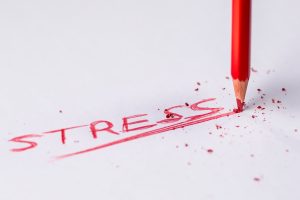What is the Purpose of an Argumentative Essay Hook?
A hook in an argumentative essay is a statement or phrase that entices readers and encourages them to keep reading. It serves as an introduction to the essay’s topic, giving the reader a general idea of what the essay will be about. The goal of a hook is to grab the reader’s attention and make them interested in the story you are telling. An effective essay hook has the power to keep the reader intrigued and wanting to know more.
The purpose of a hook is to make an impactful first impression. It should reflect the topic of your paper and set the tone for the rest of the essay. The hook should provide the necessary context and introduce the main ideas of your essay. It should also create a connection between the reader and your essay topic, giving them a reason to read on.
Strong hooks should be creative and emphasize the main themes of your essay. It should be intriguing enough to capture the reader’s attention, but not so complex that they lose interest. Be sure to use interesting and engaging language to ensure that it makes an impact.
Different Types of Hooks for an Argumentative Essay
When writing an argumentative essay, it is essential to have an effective hook statement. A hook is a sentence or two that captures the attention of the reader, making them want to read on. There are several types of hooks you can use, depending on your topic and purpose.
Rhetorical questions can be a great way to engage the reader. They should not be answered within the essay but rather posed as a thought-provoking statement. Quotes can also be used as a hook, especially if they are from a well-known figure or relate to your topic in some way. Statistics can be an effective hook too – they peak the reader’s interest and give a clearer idea of the point you’re trying to make.
Anecdotes and stories can provide interesting insight into your thesis statement and draw the reader into the essay. Metaphors and allegories can help illustrate complex ideas in a more creative, accessible way. You can also use visual imagery to evoke strong emotions from the reader.
No matter which type of hook you choose, it is important to craft it carefully. Make sure it connects directly to your argument and paints a vivid mental image for the reader. When done correctly, a hook will make your argumentative essay stand out from the crowd.
Provide Examples of Each Type of Hook and Analyze Their Effectiveness
A hook is a statement at the beginning of an essay that grabs the reader’s attention and makes them interested in reading more. It is an essential component of any argumentative essay, as it helps make the essay more persuasive and engaging. There are several different types of hooks that can be used, each having its own distinct purpose. In this section, we will provide examples of each type of hook and explain how they can be used effectively.
Rhetorical Questions
Rhetorical questions are statements posed in the form of questions which do not necessarily require an answer. These can be used to make the audience think about the issue and become curious about what follows in the essay. For example: “Do you ever wonder why people act so differently around different groups of people?”
Quotes
Quotes from famous people can help draw the reader in and get them to think about the argument in a different light. For example: “The only way to make sense out of change is to plunge into it, move with it, and join the dance,” – Alan Watts.
Statistics
Statistics can be used to show the reader just how common or rare a particular problem is and can be especially helpful when trying to make a point about a social issue. For example: “Over 50% of all homeless individuals in the US are veterans.”
Anecdotes, Stories, Metaphors and Allegories
These literary devices can be used to paint a vivid picture in the reader’s mind and create a strong emotional response. For example: “She was like a leaf in the wind, desperate for someone to take her by the hand and give her a chance, but no one came.”
Each type of hook can be effective when used correctly, as long as it is relevant to the argument being made. While some hooks may work better for certain types of essays, it is important to experiment and find the best fit for your topic.
Hook Structure and Form
A hook is the most important part of your argumentative essay because it grabs the reader’s attention. There are several different types of hooks you can use to start your essay, each with its own specific structure and form. It’s important to know the structure and form of each type of hook so that you can create an effective one for your essay.
Rhetorical Questions
A rhetorical question is a statement that does not require an answer from the reader. Rather, it encourages them to think more deeply about your topic and helps to set the tone for the rest of your piece. Rhetorical questions should be direct and concise, but also be thought-provoking and engaging. For example, you could start your essay with a question such as, “How can we tackle environmental degradation?”
Quotes
Quotes can be used to grab the reader’s attention and bring extra depth to your essay. It’s important to choose a quote that accurately reflects your argument and resonates with your audience. Make sure to explain how the quote relates to your argument and why it’s relevant to the reader. For example, you could start your essay with a quote from Mahatma Gandhi: “Be the change you wish to see in the world.”
Statistics
Statistics can be a powerful way to make a point and engage readers. Be sure to cite the source of your statistics and explain why they are important and relevant to your argument. You can provide a shocking statistic to grab people’s attention or use a statistic to back up your point. For example, you could start your essay with the statistic: “Over 80% of the world’s coral reefs are in danger due to human activity.”
Anecdotes or Stories
Anecdotes or stories can be a great way to engage your readers and draw them into your essay. Keep your story relevant to the topic and make sure it has an impactful ending. For example, you could start your essay with a story about a person who overcame a challenge related to your topic. This could be a great way to illustrate your point and show the reader the importance of your argument.
Metaphors and Allegories
Metaphors and allegories can be useful tools for expressing complex ideas in a simple way. Metaphors are comparisons between two seemingly unrelated objects, while allegories are longer moral stories. When using metaphors and allegories, make sure to explain their relevance to your argument so that readers can understand them. For example, you could start your essay with an allegory about a tree and how it has been affected by pollution.
Discussing Relevant Topics for a Strong Hook Statement
A hook statement, also known as an attention grabber, is the opening sentence of an argumentative essay. The primary purpose of a hook statement is to grab the reader’s attention and make them interested in the essay. It is also important to create a hook that is relevant to the topic of the essay, so that the readers have an understanding of what the essay is about.
There are many topics and ideas that can provide a strong hook statement for an argumentative essay. It is important to consider the overall tone and theme of the essay when selecting a topic. Some potential topics for an argumentative essay include: immigration, gun control, social media, education, health care, and climate change.
For example, if your essay is about gun control, you could start with a rhetorical question such as “Should civilians have the right to own firearms?” or a quote such as “Guns don’t kill people, people kill people.” Other possible hooks could be a statistic, anecdote, story, metaphor, allegory, or even a personal experience related to the topic.
No matter what route you decide to go in terms of creating your hook statement, it is important to ensure that it is relevant to the topic of your essay and captures the reader’s attention. Once you have chosen an appropriate topic, you can begin crafting your hook statement and making sure that it is effective and compelling.
Citing Examples of Good Hooks from Literary Works and Public Speeches
Creating a strong hook for an argumentative essay can be difficult if you’re starting from scratch. Fortunately, there are many examples of hooks that have been used successfully by writers and speakers in the past. Examining these examples can give you ideas and inspiration for your own hooks.
When looking for example hooks, begin by researching literature and public speeches. Popular authors often write hooks that grab their audience’s attention. The same is true of well-known speakers. Consider examining some of the most famous works of fiction as well as speeches given by influential people.
Fiction is full of great hooks. In Charles Dickens’ novel A Tale of Two Cities, Dickens starts with the memorable line, “It was the best of times, it was the worst of times.” This instantly grabs the reader’s attention and sets up the conflict of the story.
Public speeches also provide plenty of examples of great hooks. Martin Luther King Jr. famously begins his “I Have a Dream” speech with the stirring words, “I am happy to join with you today in what will go down in history as the greatest demonstration for freedom in the history of our nation.”
Reading literature and speeches from the past can help you develop unique hooks for your own argumentative essays. By analyzing how other writers and speakers have captured their audiences’ attention, you can develop your own creative ideas for hooks.








